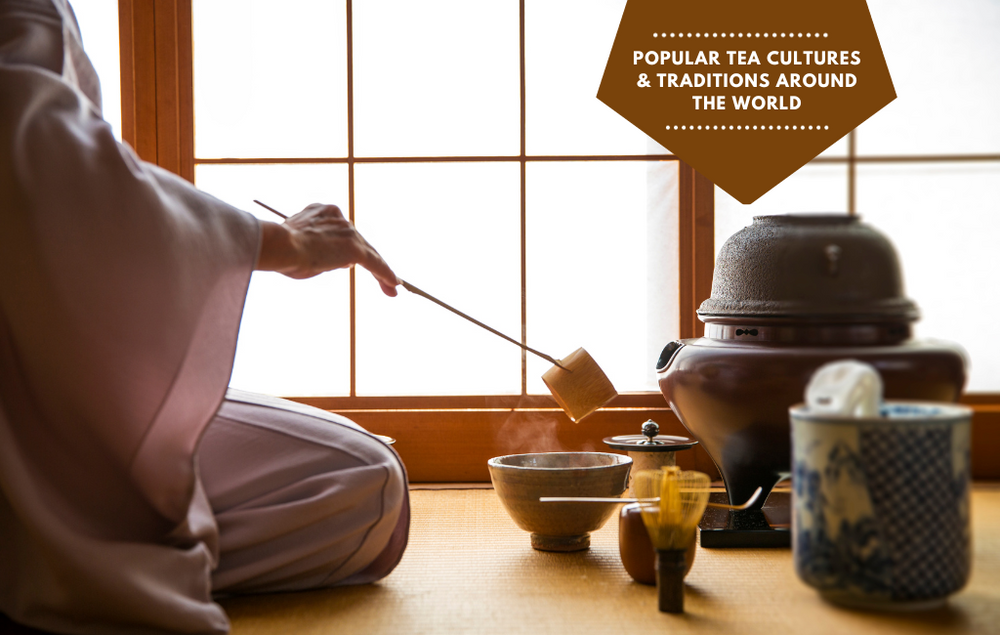Understanding cultures and customs most familiar to an audience requires recognizing regional traditions and social behaviors. This knowledge aids in strengthening global connections and interpersonal relations.
Exploring the myriad of cultures and customs across the globe is a fascinating journey into the heart of what defines societies and communities. Each culture possesses its unique blend of traditions, rituals, and etiquette, shaping the way people interact, celebrate, and live.
From the communal tea ceremonies in Japan to the lively samba parades of Brazil, these customs provide a window into the values and history of a region. Grasping the nuances of local customs is crucial for anyone looking to engage with different cultures, be it for travel, business, or personal enrichment. As our world becomes increasingly interconnected, cultural literacy not only fosters respect and understanding but also paves the way for successful cross-cultural communications. Whether celebrating the vibrant festivals of India or observing the quiet reflection of Scandinavian hygge, learning about these practices enriches our global perspective.
Globalization’s Impact On Cultural Traditions
Our world is smaller than ever thanks to globalization. Cultures and customs mingle, bringing both challenges and opportunities. As societies come together, they shape and reshape their identities. From food to festivals, globalization changes how we live and celebrate.
The Melding Of International Customs
Diverse cultures often influence each other.
- Food: Sushi tacos and kimchi pizzas are new favorites.
- Music: K-pop hits top charts worldwide now.
- Festivals: Color runs blend Holi with modern fitness.
These fusions create exciting blends, yet some worry about losing tradition.
Preserving Authenticity Amidst Global Influence
Keeping traditions alive is vital in a connected world.
- Communities focus on teaching local history and practices.
- Artisans and chefs strive to maintain traditional methods.
- Events like cultural fairs highlight unique aspects of a culture.
It’s a delicate balance between embracing change and honoring heritage.
Cultures At The Crossroads Of World Traditions
Welcome to the vibrant tapestry of humanity, where Cultures at the Crossroads of World Traditions weave together. These intersecting paths create unique and colorful blends that define our global heritage. In every corner of our world, diverse traditions merge, shaping societies rich in collective memory and shared future visions.
Examples Of Syncretic Cultures
Cultural syncretism occurs where beliefs and practices from different cultures blend. Let’s explore how this unfolds around the globe.
- Creole – A fusion of European, African, and Native American elements seen in places like Louisiana.
- Mestizo – Latin American cultures that combine Indigenous and Spanish influences.
- Peranakan – A rich mix of Chinese and Malay/Indonesian culture in Southeast Asia.
Cultural Hubs: Cities Sampling Worldwide Customs
Dynamic cities across the globe serve as cultural melting pots. They reflect the diversity of their inhabitants through various customs.
- New York – A mosaic of cultures with neighborhoods like Chinatown and Little Italy.
- Dubai – A city that showcases both Middle Eastern hospitality and global modernity.
- Toronto – Celebrates cultural diversity at events like the annual Caribana festival.
Festivals As A Mirror Of Global Traditions
Festivals showcase the heart and soul of a culture. They tell stories of the past and present. Music, dance, food, and colors blend to reveal a world’s history. Every country, every city, even every village has its unique celebrations. These become mirrors reflecting the diversity of global traditions.
The Fusion Of Cultural Festivals
Across the globe, festivals merge customs from various backgrounds. This fusion creates dazzling new celebrations. Think of Carnival in Brazil, where African, Portuguese, and indigenous traditions mix. Or consider the Chinese New Year parades in San Francisco. They combine classic Chinese elements with American flavors. Such events symbolize unity and cultural richness.
Maintaining Roots: Traditional Vs. Globalized Celebrations
- Traditional festivals are treasures. They hold a community’s heritage. Midsummer in Sweden and Diwali in India shine with centuries of customs.
- Globalized celebrations adopt modern twists. They often mix elements from different cultures. Halloween now has fans worldwide, blending local and international traditions.
| Festival | Traditional Roots | Globalized Elements |
|---|---|---|
| Oktoberfest | German Beer and Music | Worldwide Celebrations |
| Holi | Indian Festival of Colors | Color Runs in Western Cities |
Both traditional and globalized festivals highlight a world that loves to celebrate. Each one tells a story. Each one brings people together. And each one helps us understand the richness of human culture.

Credit: www.amazon.com
Food And Cuisine: A Smorgasbord Of Traditions
Come with us as we embark on a delicious journey. Food tells a story about its people, the climate, and the land. Our world is a banquet of flavors, each dish rooted in tradition and history. We whisk you away to different corners of the globe to savor their iconic dishes. Every bite takes us back in time, teaching us about the cultures that created them.
The Global Palate: International Culinary Exchanges
Our taste buds have the luxury of experiencing a world of flavors.
Fusion dishes merge distant cuisines, creating exciting flavors. An Italian pizza might have Indian spices. A Mexican taco could hold Korean barbecued beef. These foods travel and transform, forming connections across the seas.
- Pizza
- Origin: Italy
- Global Twist: Tandoori Chicken topping in India
- Tacos
- Origin: Mexico
- Global Twist: Bulgogi beef filling in Korea
Keeping Traditional Cuisines Alive In A Globalized World
Despite a world of mingling flavors, traditional recipes stand the test of time.
Grandparent’s methods blend with modern twists, ensuring cultural legacies don’t fade. Home cooks and chefs alike pledge to maintain the authentic taste of their homeland dishes. Cooking classes and online recipes enable everyone to try traditional cooking. Families preserve heirloom recipes to pass down through generations.
- Home Cooking
- Family recipes
- Local ingredients
- Professional Kitchens
- Chef’s signature authentic dishes
- Cooking techniques from the source
- Online Platforms
- Digital cookbooks
- Video tutorials
Clothing And Fashion: Weaving Together Global Styles
Cultures around the world dazzle with their unique fashion choices. Dress style speaks volumes about cultural identity. From the vivid sarees of India to the elegant kimonos of Japan, traditional garments tell a story. Today’s fashion celebrates these global styles, blending ancient designs with modern trends. What a thrilling sight it is to spot these cultural gems, beautifully adapted to strut down cosmopolitan streets!
International Trends In Traditional Attire
Fashionistas across the globe treasure traditional attires. They mix and match, setting international trends.
- African Dashikis: Bursting with color, embraced in streetwear
- Scottish Kilts: Worn with pride at global events
- Chinese Cheongsams: Reimagined in high-fashion circles
These timeless pieces find their way into everyday wear and elite fashion shows.
The Balance Between Innovation And Tradition In Fashion
Designers play a crucial role in fashion’s evolution. They respect tradition and yet, they dare to innovate. Balance is key. Let’s look at some examples:
| Traditional Style | Innovative Twist |
|---|---|
| Mexican Huipils | Transformed into modern dresses |
| Norwegian Bunads | Reinvented as chic, tailored jackets |
| Middle Eastern Abayas | Redesigned with contemporary patterns |
Fashion bridges the gap between the old and new. Innovation brings excitement; tradition brings depth. Together, they create a rich tapestry of global style.
Language And Literature: Expressing Identities Amidst Global Dynamics
Welcome to the intricate mosaic of human expression where language and literature act as gateways to understanding diverse cultural identities, even in a world that seems ever more connected. Language and literature embrace unique traditions and shared experiences that shape communities around the globe. As we delve deeper, we explore how they express identities and navigate the complexities of global dynamics.
Multilingual Societies: Language As A Cultural Junction
Imagine a bustling street market where vendors call out in various tongues. Multilingual societies offer rich landscapes of cultural exchange. These are places where languages intersect, evolve, and tell stories of migration, trade, and history. Consider the following insights:
- Language diversity fosters innovation and creativity within communities.
- People often code-switch between languages, showcasing adaptability.
- Societal multilingualism can lead to greater empathy and understanding among individuals.
These intersections serve not only as bridges connecting different communities but also as platforms for new cultural expressions to emerge.
Literary Works And The Reflection Of Cross-cultural Currents
Literature is a canvas painted with words that transcend borders. It mirrors the complexities of human endeavors and captures the spirit of times gone by. Look at these points:
- Stories and poems often reflect society’s pulse and its cross-cultural interactions.
- Books can be vessels for sharing collective memories and celebrating heritage.
- The themes in literature echo universal emotions and experiences.
When an author pens down their thoughts, they offer a window into their culture’s soul. Literature helps to navigate change and enrich personal identity amidst a backdrop of global dynamics.
Challenges And Opportunities In Global Cultural Practices
The world is a vibrant tapestry of cultures, each with its own unique traditions and practices. As globalization forges connections between distinct societies, individuals and organizations face both challenges and opportunities. Balancing the act of adapting to global norms and preserving cultural uniqueness, societies open doors to a plethora of opportunities by promoting cultural diversity.
Adapting To Global Norms While Preserving Uniqueness
Adapting to global norms does not mean losing cultural identity. Cultures can flourish by selectively integrating global practices. The key lies in finding a balance.
Take the example of business etiquette. International standards dictate a professional demeanor, yet local customs can shape the approach, such as a bow in Japan or a handshake in the US.
- Respect for global practices
- Retention of cultural uniqueness
- Integration of local customs in international settings
Adaptation brings challenges. Languages, for example, may simplify thus losing nuance. Careful preservation of linguistic intricacies is essential.
Opportunities In Promoting Cultural Diversity Internationally
Promoting cultural diversity internationally can lead to increased understanding and cooperation. This brings about exciting opportunities for tourism, education, and business.
For instance, a table displaying various global festivals can attract tourists and encourage cultural exchange:
| Festival | Country |
| Diwali | India |
| Carnival | Brazil |
| Chinese New Year | China |
- Increase in cultural exchange programs
- Boost to global cohesiveness
- Encouragement for multicultural education
Cultural diversity can also inspire innovation. Mixing different ideas often leads to creative solutions.
In conclusion, embracing global cultural practices is a path filled with possibilities. The key lies in striking the right balance to allow every culture to shine.

Credit: venngage.com

Credit: www.amazon.com
Frequently Asked Questions On Cultures And Customs Most Familiar With
What Are Customs In Culture Examples?
Customs in culture refer to traditional practices such as Japanese tea ceremonies, American Thanksgiving dinners, Spanish Siestas, Italian family gatherings on Sundays, and Indian wedding rituals. Each represents a unique societal norm within a specific culture.
What Are The Top 5 Cultures In The World?
The top 5 cultures in the world are often considered to be Chinese, Indian, Western, Islamic, and Latin American, reflecting their global influence and historical significance.
What Are 5 Examples Of Cultural Practices?
Cultural practices vary worldwide, including tea ceremonies in Japan, Carnival in Brazil, Siesta in Spain, Thanksgiving in the United States, and Diwali celebrations in India. These traditions reflect diverse customs and social habits.
What Are 5 Characteristics Of Culture?
Culture encompasses shared beliefs, behaviors, and values. It’s learned through socialization and can vary widely. Traditions and rituals form a culture’s backbone, while language and symbols facilitate communication. Culture is dynamic, evolving with societal changes.
Conclusion
Exploring diverse cultures enriches our understanding and appreciation of the world. Embracing these customs can bridge gaps between societies. Remember, every tradition has a story worth knowing. Keep curiosity alive and continue your journey into the colorful tapestry of global heritage.
Celebrate the variety life offers.


Leave A Comment